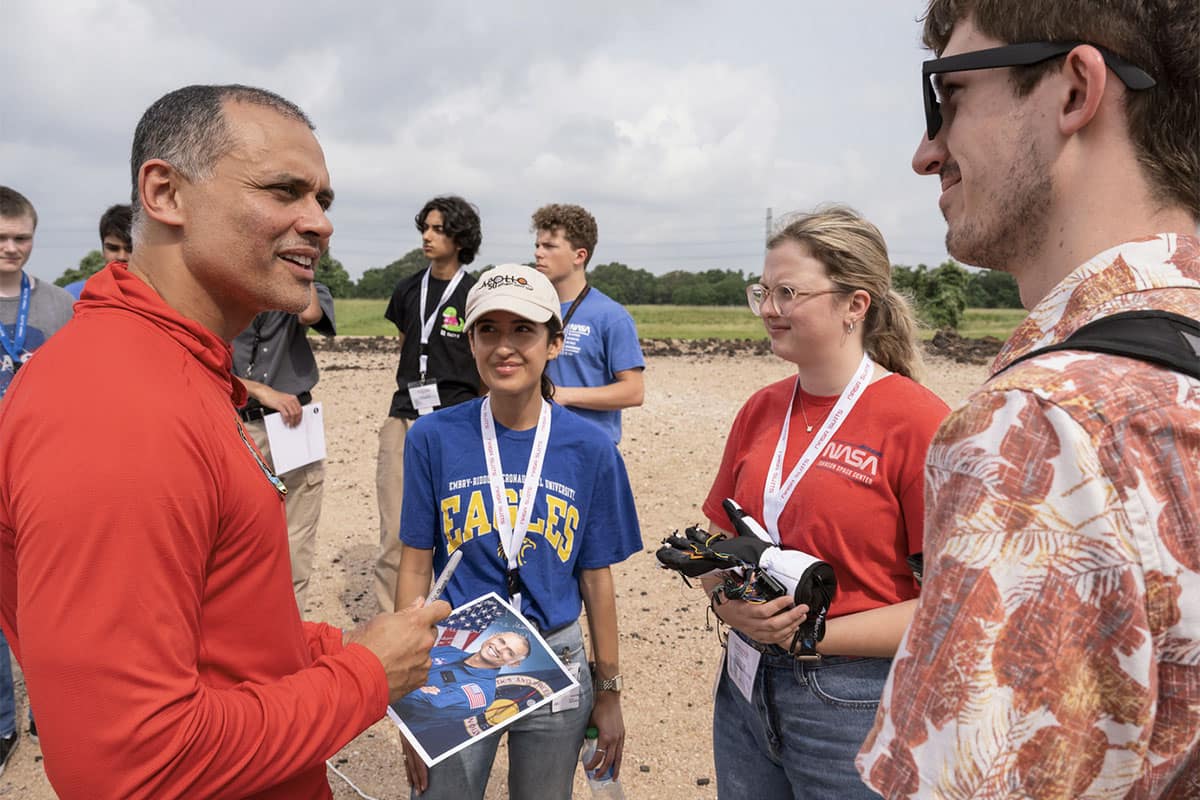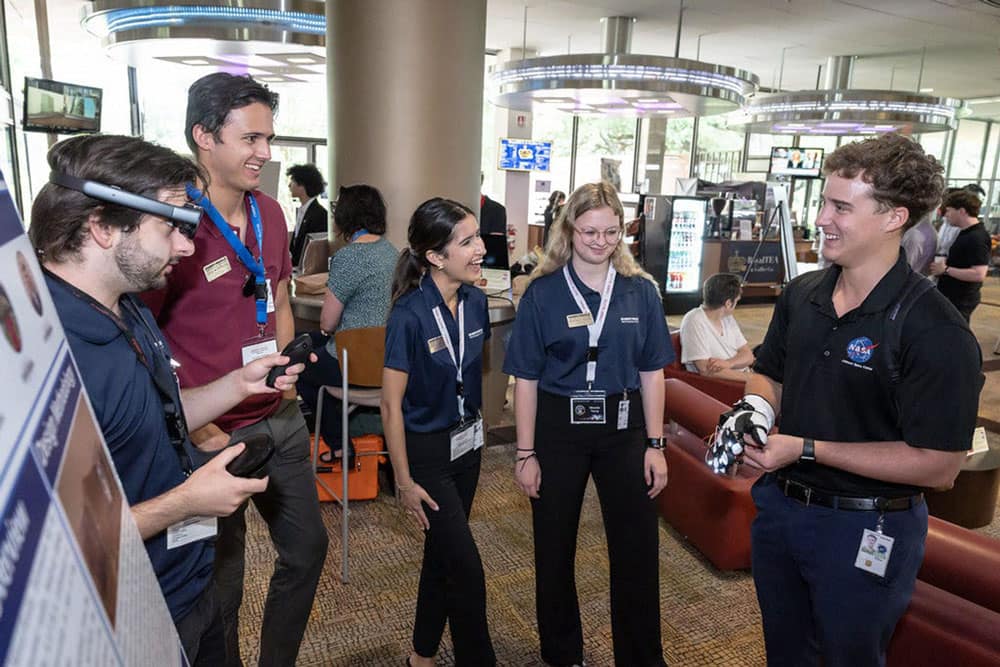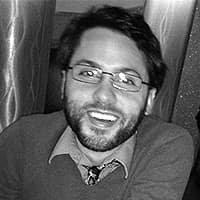Embry-Riddle Students’ Augmented-Reality Tool for Astronauts Wins NASA Innovation Award


An interdisciplinary team of students from Embry-Riddle Aeronautical University recently took home the first-ever Innovation Award at NASA’s Artemis Student Challenge for creating an augmented-reality heads-up display (HUD) to provide astronauts with improved situational awareness in space. As part of the challenge, the team also created a spacesuit glove to control the HUD and a Local Mission Control Console (LMCC) — a device to communicate with and guide astronauts during extravehicular activity on Mars.
The students on the winning Artemis Student Challenge team are part of Embry-Riddle’s Advanced Space Technologies Research Applications Lab (ASTRA), which hosts Eagles in participating in annual NASA challenges.
“The most difficult, surprising and rewarding part of the challenge for me was our control schemes research,” said Miranda Young, Aerospace Engineering junior and team lead. “Control schemes research was not part of the original challenge, but we wanted to advance our design and try to incorporate options that an astronaut could actually use.”
Doing this type of work is how I would love to spend my life.
The team used a ski glove to mimic the design of an astronaut’s suit and then added the applicable buttons and hardware. They also 3D-printed a customizable chest mount with additional controls to accommodate various mission requirements.
“The control schemes were a huge aspect of why we won our innovation award,” Young added.
The team also presented its device, which they named MIKE (Mixed-Reality Information Kit for Exploration), to engineers at NASA’s Johnson Space Center. The opportunity to network with NASA professionals is especially valuable to students hoping to start careers in the space sector after graduation.
“My dream job is to work on spacesuit development,” Young said. “In a challenge like this, we get to meet and interact with so many NASA employees and contractors, which helps us all make valuable connections.”
Teammate Cole Montrose, a Computer Science major, agreed while also reinforcing the value of conducting hands-on work with emerging technologies.
“I love working with virtual and augmented reality because of how futuristic they feel,” he said. “That’s also why I had so much fun with this challenge — we were pushing the limits of this already very new technology to solve real-world engineering challenges.”
For Montrose, the creation of the LMCC was the most rewarding part of the overall project.

Miranda Young, Joyce Garcia, Cole Montrose and Joseph DeMartini pose at Johnson Space Center. (Photo: Miranda Young)
“Our team decided to make the entire application in virtual reality, and I was the developer that built the program,” he said. “I was very happy with how the final product turned out. It made all those late nights worth it.”
And don’t forget about the “cool” factor.
“Throughout the competition, the team felt like we were making parts of an Iron Man suit,” Montrose added. “It feels motivating knowing that some of the ideas and work our team put into this project could end up being used by NASA someday. Doing this type of work is how I would love to spend my life.”
Young, in fact, has already spent much of her life engaged in space work.
As a child, her father worked at NASA’s Ames Research Center in California. That connection led to her attending Space Camp at NASA’s Marshall Space Flight Center in Alabama. As a Girl Scout, she even spent a night in Space Center Houston.
“That overnight trip was when I decided I wanted to go into the space industry and major in Aerospace Engineering,” she said. The next year, as a high school junior, she applied to her school’s Aerospace Scholars Program, which led her to Embry-Riddle.
In addition to Young and Montrose, the following students participated in the project.
- Joyce Garcia: A recent graduate from Embry-Riddle’s Spaceflight Operations and Human Factors Psychology programs, Garcia recently started her career at Barrios Technology as a commercial spaceflight integrator.
- Joseph DeMartini: Another recent graduate, DeMartini studied Engineering Physics as an undergraduate and is now working toward a graduate degree.
The student team was advised by Dr. Eric Seedhouse, associate professor of Applied Aviation Sciences, and technical support was provided by Embry-Riddle’s Extended Reality Lab, a specialized software development lab supporting various degree programs within the College of Aviation.

 Mike Cavaliere
Mike Cavaliere